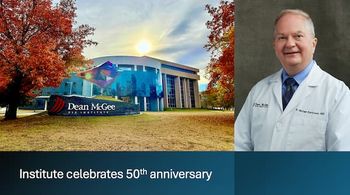
Conjunctivitis compound in phase IIb study
NovaBay Pharmaceuticals expects to enroll up to 450 patients in the second quarter of this year for its phase IIb clinical study of an anti-infective compound, NVC-422, for the treatment of adenoviral conjunctivitis.
Emeryville, CA-NovaBay Pharmaceuticals expects to enroll up to 450 patients in the second quarter of this year for its phase IIb clinical study of an anti-infective compound, NVC-422, for the treatment of adenoviral conjunctivitis.
The company was “very encouraged” by the clinical findings of its previous safety and efficacy study of the compound for conjunctivitis, said David Stroman, PhD, senior vice president of ophthalmic drug development at NovaBay.
“These data . . . demonstrated clinically meaningful resolution of signs and symptoms associated with adenoviral conjunctivitis,” he added. “Based on these findings, we have chosen appropriate clinical endpoints for the primary efficacy measures in our phase IIb study. We believe this strategy will support the design of future registration studies.”
“NVC-422 could represent a significant advancement in the treatment of adenoviral conjunctivitis, particularly in treating epidemic keratoconjunctivitis, which represents an estimated 50% of the adenoviral conjunctivitis infections, and an even higher percentage during epidemic outbreaks, ” said Ron Najafi, PhD, chairman and chief executive officer of NovaBay.
Three contract research organizations will manage the study: Symbio in the United States, Chiltern International in Brazil, and Quintiles in India. Pending successful completion of this phase, NovaBay said it may seek a partner for phase III registration studies through commercialization.
For more articles in this issue of Ophthalmology Times eReport,
Newsletter
Don’t miss out—get Ophthalmology Times updates on the latest clinical advancements and expert interviews, straight to your inbox.


















































.png)


